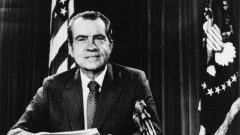One can concede the ills Carlson identifies without conceding that the “free market” caused those ills.
The Great Purge of Prices
Once upon a time, price theory and reasoning about prices was core to modern economics. Yet as Bryan P. Cutsinger and Alexander William Salter observe in a recent Free Market Institute paper, “the group that should be most committed to studying and appreciating (warts and all) the price system—professional economists—increasingly regards price theory as unworthy of attention.” To support this claim, they examine a range of datasets, ranging from the content of economics syllabi to the extent to which contemporary books on price theory are incorporated into graduate economics courses. Price theory, they conclude, “is, at best, a marginal part of today’s graduate curricula.”
This “Great Forgetting,” as Cutsinger and Salter call it, has consequences. One is that many young economists “focus on applied research using sophisticated statistical tools without an underlying theoretical framework to guide them.” The effects, however, go beyond formal economics. The marginalization of price theory in the academy is increasingly mirrored in the conduct of public policy—and the results are dire.
Mistaken Ideas Means Bad Policy
This problem constitutes the background to a new book of 28 essays, edited by the Cato Institute’s Ryan A. Bourne, entitled The War on Prices: How Popular Misconceptions about Inflation, Prices, and Value Create Bad Policy (2024). Its central theme is that deep misconceptions about the workings of prices are driving bad policy. Bourne sees these expressed in the pronouncements on inflation’s causes by Democrat and Republican politicians. This is replicated in phenomena like increasingly favorable public opinion of price controls.
What Bourne calls “a lack of appreciation for the important functions of market prices in general” helps explain deep dysfunctionalities throughout the American economy that result from federal, state, and local government policies that, it turns out, disproportionately hurt those on society’s margins. Besides inflation, other prominent examples include rent control, upper limits on short-term loans, and the regulation of entire markets stretching from water to oil and gas. Policymakers and citizens alike, Bourne comments, seem disinterested in the way that market prices “efficiently [coordinate] economic activity by providing signals and incentives to consumers and businesses.”
To illustrate how such indifference—and, at times, outright hostility—to the functioning of market prices does tremendous damage to the economy and society more generally, Bourne has assembled a cast of economists and policy experts who extend their reasoning beyond economic analysis to the lessons of history and what these things teach us about the folly of denying the truth about prices. The power of their arguments is complemented by these essays’ accessibility and judicious use of empirical information. This makes them as useful to the everyman as they are to policymakers.
Bourne uses the word “war” to describe how market prices are being shunted aside throughout the American economy. Some readers may initially view this as hyperbolic. War does, after all, involve governments using their monopoly of the legitimate use of violence to defeat a given enemy, if necessary to the point of destroying hostile states.
Nonetheless, Bourne insists, “The term ‘war’ is appropriate, as it characterizes the desire for a state-led effort to usurp the free functioning of a market economy, the invocation of a moral imperative to do so, and the ultimate futility and destructiveness of its efforts.” As one reads through the many issues addressed in these essays (CEO pay, dynamic pricing, the gender pay gap, minimum wages, price ceilings, healthcare pricing, modern monetary theory, etc.), one sees just how widespread the attack of the interventionists from the left—and now much of the right—upon free prices is.
This is not to suggest that outright socialist governments are trying to banish market prices from the economy. Taken together, however, these essays show how far we have drifted away from a time in which even many left-leaning economists had broadly accepted F. A. Hayek’s insights in “The Use of Knowledge in Society” (1945) concerning free prices’ importance in conveying and coordinating information. Increasingly, it seems, we have forgotten the folly of meddling with them.
If the war on prices being waged today continues to spread throughout the economy, long-term prosperity and high growth in America will drift further and further from our reach.
A Three-Front War
The war on free prices is being waged on three fronts. That, at least, is what readers will gather from this book’s tripartite structure. Beginning by debunking some of the more popular explanations for inflation in general and the more recent inflationary outbreak in America, the book then turns to the multiple ways in which price controls are undermining markets in areas ranging from wages to water. The third part gets to the theoretical essence of our present price problems, much of which revolves around the issue of value and its relationship to prices.
Like any collection of essays, some papers in this book are stronger than others. That said, I found none of them unsatisfactory. Moreover, all three parts begin with an introduction authored by Bourne which lays out the basic theoretical apparatus undergirding all chapters in that section. This frees up the other authors to devote more time to showing how a weak understanding of prices generates multiple problems in the development of policy which in turn produces bad economic outcomes.
Several themes regularly resurface throughout the book. The first is that a basic hostility to free commerce drives antipathy to free prices. The moment, for example, that inflation started to take off in America in January 2021, and as it became clear that this inflation was not transitory, politicians like Senator Elizabeth Warren identified corporate greed as a central cause.
The flip side of this is the second common theme: the implicit confidence of so many policymakers—again, on the left and now some on the right—in the capacity of the state and technocrats to outguess the workings of prices. That often goes together with a moral conviction that such action is needed if vulnerable groups are going to be helped. If market prices get in the way of realizing such objectives, the logic goes, so much the worse for free prices.
None of the authors in this volume deride those who sincerely believe that there are occasions when market signals conveyed by free prices should be ignored and overridden. Instead, they not only do what all good economists should do, which is to identify the unintended negative consequences of such decisions; they also show how the same policies often end up hurting the very groups they are ostensibly designed to help. In numerous instances, the wealthy and powerful are minimally affected and have the means to diminish the impact on their lives. Those who are economically poorer or lack political connections cannot.
The third theme is the manner in which fiddling with free prices necessarily spreads disinformation—and therefore untruths—about supply and demand throughout the economy. As the disinformation created by state-manipulated prices progressively pervades economic life, the coordination between producers and consumers realized by market signals starts to break down. Instead of causing governments to step back, however, the growing coordination problems generally spur those responsible for the interventions to intervene even more in an effort to correct their original errors via more government interference with prices. Untruth thus compounds the original sin of untruth, and the misallocations of capital and labor magnify throughout the economy.
Theory Matters
Most of the authors in this book propose market-based remedies that, they argue, would better realize some of the goals that those proposing to suspend market prices want to achieve. Wider acceptance of these remedies, however, is preconditioned upon better understanding by policymakers and citizens alike of the concept of value and its relationship to prices. That necessarily takes us into the area of theory. Policymakers don’t always have much patience with theory. Good economic theory, however, is critical, not least because it is the only way we can order empirical data and avoid elevating sentimentalism over logic and reason.
Underlying the angst about free prices, Bourne writes in his introduction to Part Three, is the sense that market prices are unfair. “Certain prices,” he states, “are simply viewed as wrong, unfair, or not reflective of how ‘we’ as a society should value a good or service.” For example, many ask: Why it is that essential workers, talented police officers, and courageous firefighters are paid less than, say, mediocre CEOs of underperforming large corporations?
These are not new questions. Variations of them go back centuries. Their durability has also been bolstered by serious intellectual errors, most notably the labor theory of value promoted by economic thinkers as different as Adam Smith and Karl Marx. Part of the answer to these mistakes is to be found in the subjective theory of value given decisive form by late-nineteenth-century Austrian school economists like Carl Menger and Eugen von Böhm-Bawerk, intimations of which can be found in the thought of sixteenth and seventeenth Dominican and Jesuit late-scholastic thinkers analyzing the workings of prices.
In abbreviated terms, this theory holds that the value of a good to you is derived from your desire and need for it—not the amount of work that went into making it or what some might believe to be the inherent value of that good. Your desire and need for that good are shaped by factors such as its relative scarcity, your desire and need for other goods, and intangibles like a particular good’s significance to you. The prices of goods and services in a free market reflect the subjective preferences of millions of people, and price fluctuations in such an economy can be understood as reflecting changes in people’s preferences.
More could be said about market prices and the subjective theory of value. The key point, however, is that as Deirdre Nansen McCloskey emphasizes in Chapter 19 of this book, prices are not about what we deserve. Free prices matter “because they provide information to producers about which products, services, skills, and attributes people are willing to give up some of their hard-earned labor to purchase.” This does not produce, McCloskey states, heaven-on-earth. By and large, however, free prices do lead to good outcomes because they help resources to be “put to their most valued use.” As McCloskey writes, “We want to do things well for all of us. Market prices for scarce things lead us to do so.”
These are the reasons why we should care about free prices, and why those who would seek to rig their workings need to be fiercely resisted. If the war on prices being waged today continues to spread throughout the economy, long-term prosperity and high growth in America will drift further and further from our reach. That is the great price which we would pay for our Great Forgetting.
Economic well-being is not the be-all and end-all of life. But the absence of such well-being unleashes a host of challenges that become more and more difficult to master if left unaddressed. With market prices, we can have some confidence that many economic problems can be minimized, if not substantially avoided. Without market prices, we are doubly doomed to poverty and overmighty government, which is possibly the worst outcome of all.


